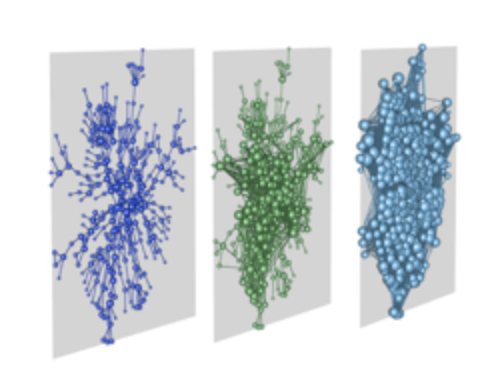| ACONTA: Augmented Complex Networks - Trustworthy Analysis |
 |
| ACONTA: Augmented Complex Networks - Trustworthy Analysis |
 |


Explainable Artificial Intelligence (XAI) has received increasing attention in the recent past, mainly due to the omnipresence of AI in everyday life and its growing impact on society. So far, however, XAI has mainly focused on static machine learning scenarios, where the task is to explain a model that has been learned from data in a batch mode, or a prediction produced by such a model for a specific query instance. In this talk, XAI is considered in the context of online learning in dynamic environments, such as learning from real-time data streams, where models are constructed incrementally and continuously adapted over the course of time. For this setting, the problem of explaining model change will be motivated, i.e., explaining why and how a model has been adapted, and how the new model differs from the previous one. As a first approach, an efficient model-agnostic approach to dynamically detecting, quantifying, and explaining significant model changes based on measures of feature importance will be presented.

We describe in this presentation how attributed graph mining has been used in a « Robot Scientist » context to select genes of interest in a never-ending-learning loop aiming at gradually improving a regulation model of Yeast. After describing the biological target problem and the essential step of translating the observations of this problem into attributed graphs, I will detail the attributed graph mining step and how it allowed finding potential genes of interest for proceeding to further experiments. I will briefly address open issues and more recent applications of such techniques in social sciences.

Land is a scarce resource and its depletion is related to a combination of demographic and economic factors. Hence, the changes in dietary habits and increase in world population that upturn the food demand, are intertwined with a context of increasing oil prices and rise of green capitalism that in turn impacts the demand in biofuel. A visible indicator of these phenomena is the increase, in recent years, of Large Scale Land Acquisitions (LSLAs) by private companies or states. Such land investments often lead to conflicts with local population and have raised issues regarding people’s rights, the role of different production models and land governance. In this talk, we will show how publicly available data about LSLAs can be modeled into complex network structures, and how the application of advanced network analysis techniques can be used to better understand land trade dynamics. The analyses reveal how, while the land trade market is massively characterized by a Global North-Global South dynamic, on the other hand the investing power of emerging economies also has a major impact in creating relations between different sub-regions of the world. We will also resort to eigenvector based centrality methods in order to measure to what extent such emerging economies may be associated to an anomalous land trade behavior, e.g., when they both acquire and cede land in the transnational context.

Graph-based data representation is very popular in many research areas, including the field of cybersecurity, in which the community uses the so-called attacks graphs to model the cyber attacks since mid 90'. However, with the increasing complexity of cyber attacks and the protected systems, the attack models are growing and becoming complex networks. In this talk, we will show how complex networks can be used to model the protected systems (including large networks and infrastructures) and how they help in proactive and reactive cyber defense. We will go through several existing approaches and tools (e.g., Cauldron by MITRE, CRUSOE by CSIRT-MU) and discuss the challenges related to the everchanging threat landscape, insufficient or incompatible ontologies, and heterogeneity and frequent unavailability of relevant cybersecurity data that complicate the mining and other advanced analyses